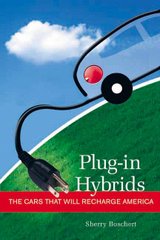A few items before I head out to Black Rock City for two weeks. Out in the desert as part of
Burning Man, our encampment, Snow Koan Solar, is setting up a solar photovoltaic EV Charging Station (at 7:30 and Desert) for electric scooters, golf carts, sofas and barstools. We'll also be taking Burning Man art projects off petroleum generators by switching them to solar electricity.
Although Black Rock City probably has the worst air in the west during its brief annual existence, it is where I had my first electric transport epiphany. The electric sofas and scooters were so much cooler - and quieter - than the gasoline powered stinkers that predominate. As Burning Man attempts to go green, here's to hoping they become the first American City to ban the internal combustion engine within its borders. We may need ICE vehicles to get there (gas cars will serve for long distance travel even as EVs come to market, I believe) but they should be parked and forgotten. Feet, pedals and electric motors only will make for a much more pleasant and greener event. Back after Labor Day.
Google Guys Th!nk it Over
Recently I posted about how
Google.org gets it. Their
Rechargeit.org campaign really makes the connections between renewable power and plug-in cars. The founders of Google have made personal investments in
Tesla as befits dotcom billionaires, and they're converting Priuses to plug-in hybrids for the company fleet with battery maker
A123. Now the relationship with EVs may be going further still. A number of websites (
webpronews.com,
pandia.com) are reporting that Google may be getting more involved with
Th!nk Global, the reinvigorated Norwegian electric car maker. Google founder Sergey Brin drove one of the 2001 Th!nk City cars when Ford brought them to California to meet its
ZEV Mandate obligation. I did, too, until Ford confiscated the cars and sold the company.
I believe Google would find Th!nk City electric cars a great fit with Google.org’s intentions. The plug-in Priuses are almost doubling the fuel efficiency of Google standard Prius fleet, getting 74 MPG rather than 41 MPG. That's great, but because most driving down Silicon Valley way is on the freeway for rather short distances, the plug-ins don’t do much all-electric driving and the MPG isn't approaching the much touted 100MPG. The Th!nk City could do the 20 – 50 mile round-trips without petroleum, using only the power from Google’s solar array. I hope Google is realizing that their plug-in hybrid fleet could probably mostly be all-electric cars. And with Google's clout, they could make the cars a reality
GM Getting Lots of PHEV Ink; Rolls Out 100 H2 FCVs – Huh?
GM has been getting a lot of attention with its plug-in intentions. Contracts for lithium batteries for the plug-in hybrid Saturn Vue and the Chevrolet Volt have received much press. Still no truly firm date for either car, but GM has been stoking the expectation fire.
At the same time, they are looking for 100 consumers to take on a $1 million hydrogen fuel cell vehicle. They will join the one Honda Fuel Cell car currently in private hands in Southern California. The participants in
Project Driveway will have to be located in Westchester, NY, Washington DC or Orange County, CA, places with hydrogen fueling stations. If drivers have to pay for fuel, this may become Project Permanently Parked in the Driveway, as the price of H2 is about four times that of gasoline.
If GM truly believes what it’s saying about the electrification of cars and the future of plug-in technology, it ought to announce the shelving of its fuel cell program for the time being. GM hasn’t got the resources or good will banked to do both plug-in and fuel cell roll-outs, and it knows only one of those has a near term prospect for success. We’ve all got electricity at home and work right now, and we’d like to use it for our cars.
Toyota’s first Plug-in Prius to Use NiMHToyota is postponing its Lithium Priuses and rolling out a few NiMH plug-in Priuses for testing purposes. Hard to say what the Lithium issues are, as GM and A123 are reporting Lithium batteries all but ready to go. Perhaps Toyota’s battery division is having problems. Perhaps Toyota, as hybrid leader, doesn’t want to get too far out front. It’s hard to believe Toyota will allow GM to be the plug-in leader. Of course, the Volt remains a desire at this point, not yet a reality. I hope to drive the Toyota built plug-in Prius coming to nearby UC Berkeley, and will give a full report. But let's be clear: Toyota could have NiMH plug-in cars on the road in large numbers already - both all-electric and plug-in hybrid - but has chosen not to. My RAV4 EV with NiMH batteries is going strong after more than 5 years and over 50,000 miles. Hundreds of thousands of Priuses with NiMH batteries are on the road without battery issues.
EPRI-NRDC Study Out; Electricity Better, If You Want It To BeThe oft-postponed EPRI-NRDC plug-in hybrid study was unambiguous – moving to electricity for cars would yield a reduction in greenhouse gas emissions. And in most places other toxic emissions would be lower as well. But the study managed to find a few places were a few people might be exposed to slightly higher levels of one toxin or another, and thus refused to make the bold statement required to help move environmentalists toward a sane position on plug-in cars. See for yourself at
www.epri-reports.org/Vectrix - Awesome ZEV Maxi-Scooter Available Now
The
Vectrix made its
debut in San Francsico. Using NiMH batteries, it provides the range and the zip missing from most electric scooters. At a price, of course, but a state rebate of $2000 for Zero Emission Vehicles will apply.




